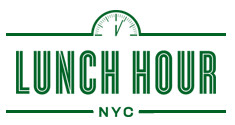 Although restaurant patrons often question servers about the sources of the food on the menu – whether it’s organic, local, or fresh – they rarely think about the work life of their server or other restaurant personnel. In the words of Saru Jayaraman, author of Behind the Kitchen Door, most “are totally unaware of the horribly exploitative working conditions in restaurants, which affect the quality of our food and, ultimately, our health.”
Although restaurant patrons often question servers about the sources of the food on the menu – whether it’s organic, local, or fresh – they rarely think about the work life of their server or other restaurant personnel. In the words of Saru Jayaraman, author of Behind the Kitchen Door, most “are totally unaware of the horribly exploitative working conditions in restaurants, which affect the quality of our food and, ultimately, our health.”
They do not know, for instance, that many restaurant workers earn less than poverty-level incomes in jobs that are ranked among the nation’s worst paying, are often cheated out of their earnings, and often feel compelled to work when sick. Or that female restaurant workers and all workers of color face discrimination pushing them into the lowest ranks of restaurant jobs where their chances of rising are often blocked.
Jayaraman, one of the founders of the Restaurant Opportunities Center (ROC) in 2002, wrote Behind the Kitchen Door to make the restaurant public as thoughtful about restaurant employees as they are about restaurant food, and to engage them in the movement to better workers’ pay and opportunities. The book intersperses facts about restaurant working conditions with moving stories of individuals.
If you read this book it’s true that you will probably not be quite as carefree about future restaurant experiences as you were before. You may become more selective about which restaurants you patronize. On the bright side, you may decide to help change things.
Consider the following, much of which is from surveys conducted by ROC:
● Restaurant workers made, on average, an annual income of $15,092 in 2009, one third of what other workers in the private sector made on average.
● The $2.13 federal minimum wage for tipped workers, originally calculated as one half the minimum wage (when it was $4.25), has not risen since 1991. (Restaurants are allowed to apply tips to workers’ hourly wages to meet the current $7.25 federal minimum wage.)
 ● The National Restaurant Association, “dominated by large multinational restaurant corporations that have a lot of money to spend on lobbyists,” such as the Darden group (Red Lobster, Olive Garden, and others) firmly opposes increases in the minimum tipped wage of $2.13.
● The National Restaurant Association, “dominated by large multinational restaurant corporations that have a lot of money to spend on lobbyists,” such as the Darden group (Red Lobster, Olive Garden, and others) firmly opposes increases in the minimum tipped wage of $2.13.
● States can set a minimum wage for tipped workers, and seven (Alaska, California, Minnesota, Montana, Nevada, Oregon, and Washington) have the same minimum wage for tipped as for non-tipped workers. The NRA claims raising the minimum wage for tipped workers would create a hardship, yet the seven states “all have thriving restaurant industries,” according to Jayaraman. Look at the Department of Labor’s 2013 table “Minimum wages for tipped workers” to see how states compare.
● ROC surveys of more than 4,000 restaurant workers found that 90% had no paid sick days and most could not afford to take off work when sick. According to Jayaraman, the National Restaurant Association “has spent years lobbying to prevent restaurant workers from winning paid sick days. In Washington, D.C., the NRA struck a closed-door deal with the city council to exempt all tipped workers from a local paid sick-leave law.”
● In ROC’s national survey, “three-quarters of all white workers held a position in the front of a restaurant, while less than half of all African American and about one-third of all Latino workers held a front of the house position.” When African Americans and Latinos do work in the dining room they are most likely to be bussers – and to find it hard to get promoted to server with the chance to multiply their earnings times five or more.
These are but a few of the revelations in Behind the Kitchen Door. If the book has a single message about what to do, it is, “Adopt a definition of ‘sustainable food’ that includes sustainable labor practices.”
ROC puts out an annual National Diners Guide. Although it contains relatively few restaurants, it is worth looking at.
© Jan Whitaker, 2013


































 It's great to hear from readers and I take time to answer queries. I can't always find what you are looking for, but I do appreciate getting thank yous no matter what the outcome.
It's great to hear from readers and I take time to answer queries. I can't always find what you are looking for, but I do appreciate getting thank yous no matter what the outcome.


